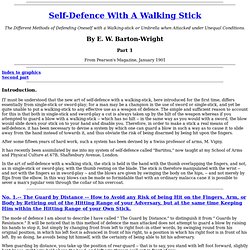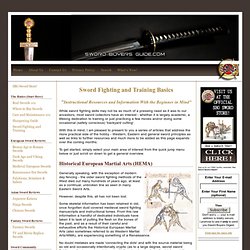

Armizare Vade Mecum. Microsoft Word - complete.doc - cold-steel.pdf. The Knight Baker's Blog. Swashbuckler.

Swashing your buckler. The term swashbuckler may refer to the sound sword make as young English ruffians bash them against their bucklers as they prowled the streets looking for a fight. I’m not entirely sure I believe in that origin of the word, but it’s an explanation that, despite being a little too pat for my tastes, works as well as any. This small, handheld shield was ridiculously popular throughout so very much of history.
But why? The first records we have of the buckler being used in a formal martial art is from the I.33 manual, written around the year 1300. To this: Quite the change. Escrime a la canne. Book:Elite Warriors (Weaponology) Weapon. A weapon, arm, or armament is any device used in order to inflict damage or harm to living beings, structures, or systems.

Weapons are used to increase the efficacy and efficiency of activities such as hunting, crime, law enforcement, self-defense, and warfare. In a broader context, weapons may be construed to include anything used to gain a strategic, material or mental advantage over an adversary. History[edit] Prehistoric[edit] The use of objects as weapons has been observed among chimpanzees,[1] leading to speculation that early hominids first began to use weapons as early as five million years ago.[2] However, this can not be confirmed using physical evidence because wooden clubs, spears, and unshaped stones would not have left an unambiguous record.
Ancient and classical[edit] How to legally buy a gun in Canada. Index:Paradoxes of Defense (George Silver).pdf - Wiktenauer, the world's largest HEMA library. Dussack_instructions.pdf. How to make a cheap Dussack out of wood. Jiu-Jitsu and Other Methods of Self Defense by Percy Longhurst (Paperback. Self-Defence With A Walking Stick 1. The Different Methods of Defending Oneself with a Walking-stick or Umbrella when Attacked under Unequal Conditions.

Part 1 From Pearson's Magazine, January 1901 Index to graphics Second part Introduction. April Challenge -Catching Steel- Entwaffnung mit einem scharfen Schwert. 10 Need-to-Know Gun Control Myths. Big.pdf. Mouse_Knives.pdf. LjubljanaGeometry3.0. LongswordGeometry. SoeborgTeaser - thesoeborgsword.pdf. SCA heavy combat. Fighters practicing at Pennsic XXXVIII (2009).

Note the use of rattan swords and edge padding on the shields Heavy combat is a combat sport developed by the Society for Creative Anachronism (SCA) in which participants in body armour act out mock combats loosely inspired by forms of historical combat practiced in medieval Europe.[1][2] It is variously considered a combat sport, contact sport, or a form of martial art. [citation needed] The term heavy is used to distinguish this from other combat disciplines in the SCA: Rapier fencing, Archery (combat and target), Thrown Weapons, and Equestrian. Participants use armour and weapons specified by SCA standards and rules.
Weaponry[edit] Fighters practising at Pennsic XXXVIII (2009) Armour[edit] All armour standards are codified, with slight variations between the different regional groups within the SCA. Rules[edit] Fighters practising at Gulf Wars XIII (2004) Heavy combat within the SCA uses a body part target location system. Competitions[edit] On Armor. Arts of Combat and Chivalry. Professional Fighting VS. Actual Fighting. Sword Fighting and Training Basics. While sword fighting skills may not be as much of a pressing need as it was to our ancestors, most sword collectors have an interest - whether it is largely academic, a lifelong dedication to training or just practicing a few moves and/or doing some occasional (safety conscious) 'backyard cutting'.

With this in mind, I am pleased to present to you a series of articles that address the more practical side of the hobby - Western, Eastern and general sword principles as well as links to further resources and much more to be added as this page expands over the coming months. To get started, simply select your main area of interest from the quick jump menu below or just scroll on down to get a general overview. Historical European Martial Arts (HEMA) Generally speaking, with the exception of modern day fencing - the older sword fighting methods of the West died out many hundreds of years ago, at least as a continual, unbroken line as seen in many Eastern Sword Arts. Equipment Needed Test Cutting. Online Library: George Silver: Brief Instructions to my Paradoxes of Defence. Introduction Note: While George Silver's Paradoxes of Defence was published in 1599, the Brief Instructions, which is the book which actually explains how to use various weapons instead of merely lecturing about why rapiers are so bad, was apparently not published until a copy of the manuscript was discovered in the British Museum, and was subsequently printed in 1898 by Captain Cyril G.

R. Matthey. The manuscript was not dated, but it mentions Saviolo's book, which was published in 1595. A useful introduction to this book may be found in Three Elizabethan Fencing Manuals, by James L. For the true handling of all manner of weapons together with the four grounds and the four governors which governors are left out in my paradoxes without the knowledge of which no man may fight safe. Notice: Click here for details on registering with AEMMA and obtaining your Online Library electronic card. Caledonian Broadsword Demonstrations.
6 Insane Sports That Could Be in the Next Olympics. LeCanne (Canne De Combat) LeCanne appeared in the 1924 Olympics, but was never brought back, presumably because watching two guys bash each other with sticks while jumping around like fucking Neo from the Matrix caused spectators back then to crap their bloomers and/or drop their monacles.

The sport was developed back in the old timey days when men still carried canes, even if they had two perfectly good legs.